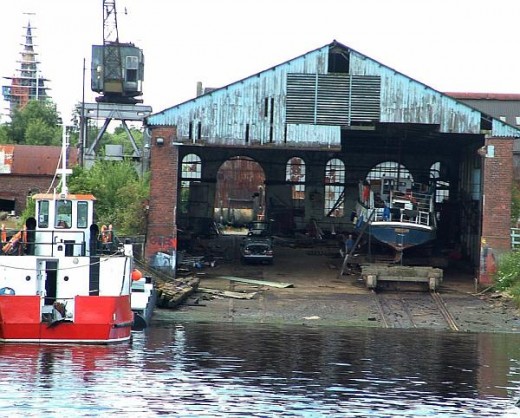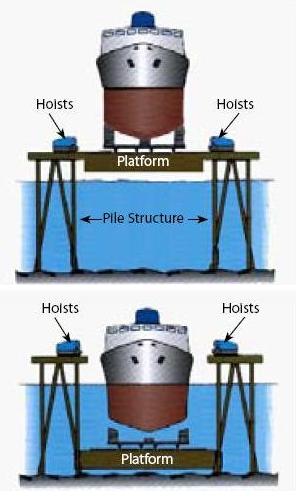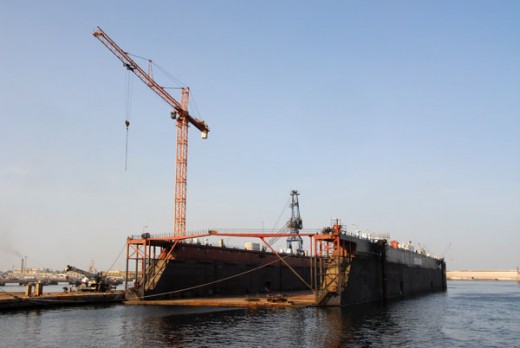Types of Drydock

PATENT SLIP
This dry-dock is suitable for small ships, tugs, boats, ferries etc.
This dry dock consists of permanently built slipway, movable cradle & a train engine to pull the cradle & the vessel out of water. In olden days beasts of burden used to pull out the cradle & the vessel. Vessel will move toward the slipway. Then the cradle is moved under the vessel & vessel will be moored to the cradle. During low tide, vessel will sit on the cradle then both will be pulled out from the water. Tide is the vertical movement of water in the sea & it changes continuously throughout the day. It happens because of the attraction of the moon & sun towards the moving earth.
SHIP LIFT
This method is suitable for small vessels, tugs, boats & ferries etc. There are many kinds of ship lifts. Ship lift is most of the time by mechanical lift lock. As shown in the above pictures vessel will move toward the platform & float above the platform & then it will be lifted up by hoists. These hoists can be steam driven winches, hydraulic winches, electric winches, hydraulic jack ups etc. Again releasing the vessel will follow the same mechanism upon completion of work.

FLOATING DOCK
Floating docks are suitable for medium sized vessels. The advantage of this system is the dock itself can accommodate the vessel by changing its draft. It consists of buoyancy chambers (tanks) which can be ballasted using ballast pumps. These ballast pumps are located in the sponsons. Sponsons are the side projection part of the dock.
By ballasting, the dock will submerge in the water & accommodate the vessel, then by deballasting it will rise up with the vessel. Departing the dock is vice versa.

Excavated dock
These are the dry-docks suitable for large vessels. Even VLCCs, Cape size bulkers & large container vessels can be dry-docked. The dry-dock has three sides(sponsons),the bottom part & the dock gate. Normally the sides & the bottom are made of very thick concrete walls. The gate is made with steel with thick rubber packing. The ballast pumps are located near gate & water is pumped in & out as necessary. Most of gates are operated by power of hydraulic packs using hydraulic latch.




